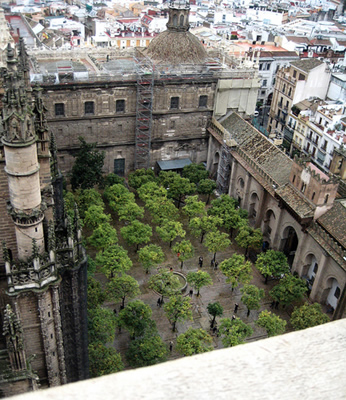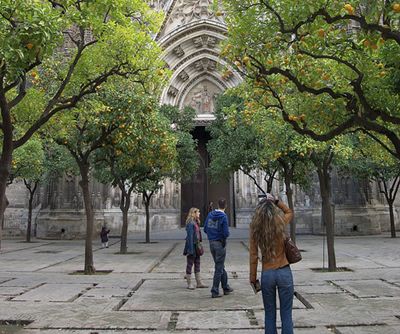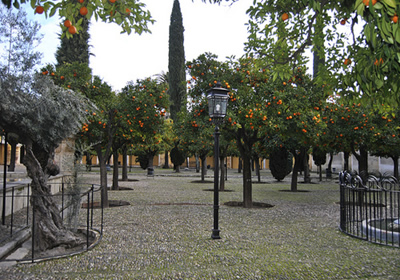Cordoba in Spain, is one of those great cities that you should not miss, if you as a route to this country. Among its tourist diversification, which will present today, we say that this city have great historical legacies.
Photography by borkur.net
Patio de los Naranjos in the Mosque:
When in your tourist trip to Cordoba you visit the impressive monument of the Mosque, the first thing that will surprise you is the beautiful Patio de los Naranjos.
Behind the wall that sits on the northwest side of the vast enclosure of the Mosque of Cordoba, and as a prelude to the entrance to the temple, you find the above Patio de los Naranjos.
This large patio of 130 meters long by 50 wide, is named for the rows that stretch with 98 orange trees which were planted in the late seventeenth century.
Along with palm trees, orange trees set a scene of great color and beauty, especially in the winter, coinciding precisely in my last two visits to Cordoba.
The origin of the Patio de los Naranjos is a small courtyard of ablutions to be built off the original prayer hall of the mosque. In the year 786.
However, the current size of the patio, you can find during your visit to the mosque, correspond to the expansion that took place in the tenth century, at the time of Abderrahman III.
Photography by peribanyez
After entering the Patio de los Naranjos, possibly the most important access, the Door of Forgiveness, the most you’ll get attention is the beautiful scene that make up the orange and palm trees with high Tower of the Mosque, which is a sequence of the original minaret of the Umayyad Mosque.
Therefore, to enjoy this beautiful view, it is best accessed by the east side, in particular through the Puerta de Santa Catalina.
Fuente de Santa Maria in the Patio de los Naranjos:
But in the Patio de los Naranjos in the Mosque of Cordoba also find two sources and three fountains. The most prominent is the Source of Santa Maria, also called Olive Cano, XVII century baroque fountain.
And the other corner highlight of Patio de los Naranjos is the arcaded galleries, which at different times were used as a school campus, or even a hospital.
Currently, in one corner of the arcaded galleries is where video is projected highly recommended introduction to the Soul night tour of Cordoba.
The historic fortress of the Alcazar de los Reyes Cristianos in Cordoba, Andalusia, is currently used as a venue for public events by the Department of Tourism of the City of Cordoba.
But in its interior rooms can also view an exhibition of Roman mosaics and sarcophagi of ages II and III recovered in excavations in the central square.
Photography by aquilino2010
Door of Forgiveness:
Door of Forgiveness, the main access to the Patio de los Naranjos in the Mosque of Cordoba. When you visit the Mosque of Cordoba, possibly through the Door of Pardon the large patio that precedes it, called the Patio de los Naranjos.
“La Puerta del Perdón” find on the north side of the wall surrounding the courtyard, at the foot of the old Muslim minaret, now converted into a bell tower, one of the icons present in the city of Cordoba.
This is the main gateway to the Patio de los Naranjos in the Mosque of Cordoba, and is used during the Holy Week brotherhoods by to enter the cathedral grounds.
Photography by Cayetano
The Gate of Forgiveness was built in 1377, during the time of the Castilian king Henry II, from the original door of the tenth century It was a Mudejar style reform posed a double portico with an indoor enclosure.
The two doors, interior and exterior, each have horseshoe arches. The interior area between the two doors has a dome that was originally made of brick, but now see an eighteenth-century plasterwork.
Enjoy the ride!
Leave a Reply
You must be logged in to post a comment.




Recent Comments